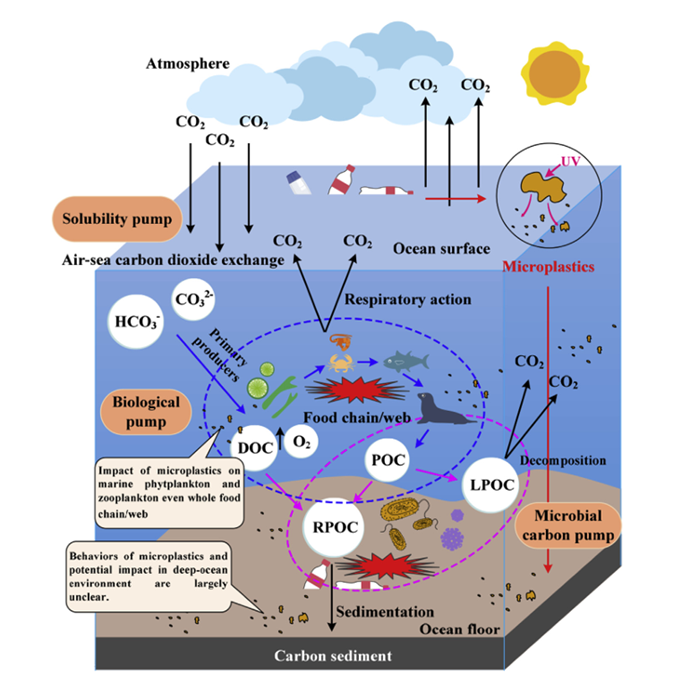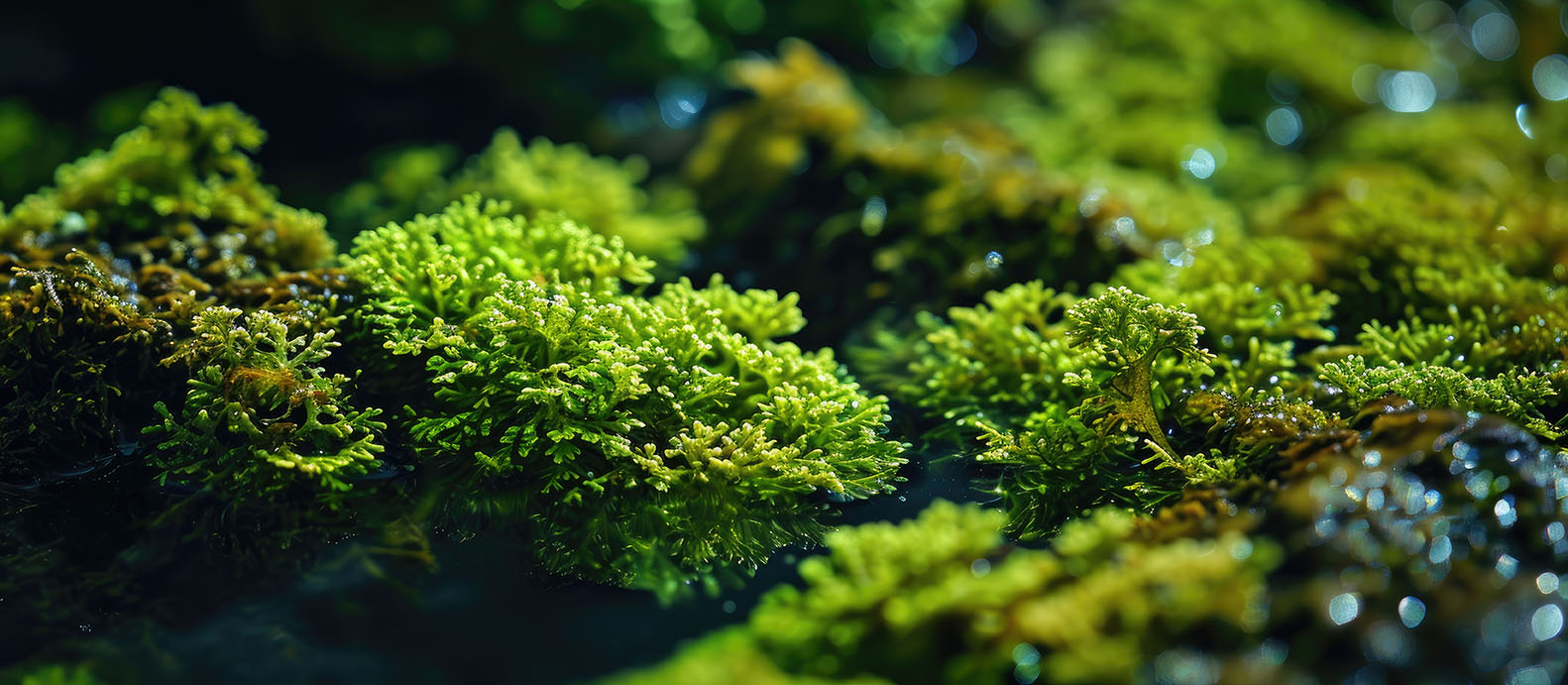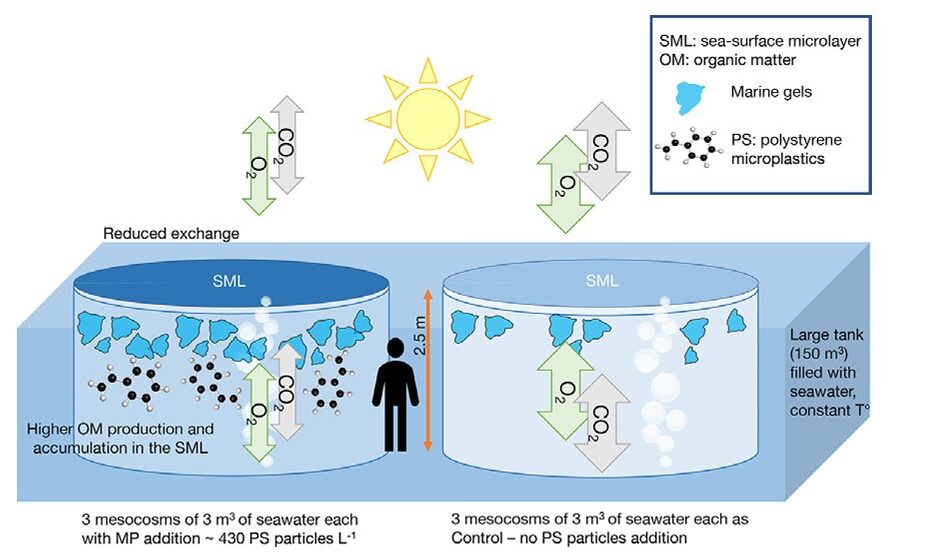Microplastics and their Impact on Air-Sea CO2 Exchange

In the fight against global climate change, oceans play a key role as a significant carbon reservoir. However, inadequate waste management systems for plastics have led to a widespread release of these materials into the world’s oceans.
As plastics degrade, they break down into smaller fragments known as microplastics, and even further into nanoplastics, exacerbating the issue of ocean plastic pollution. This environmental crisis has garnered significant scientific attention in recent years, prompting investigations into its far-reaching impacts, particularly on air-sea CO2 exchange, organisms, and ecosystems.
You can also read: Editor’s Letter: Navigating Misinterpretation, Nanoplastics in Bottled Water
Microplastics Impact on Phytoplankton Photosynthesis
Despite their microscopic size, phytoplankton plays a critical role in marine ecosystems as the primary producers of the ocean. However, the widespread presence of microplastics harms phytoplankton growth as they block light transmission, decreasing the efficiency of photosynthesis and preventing marine primary productivity.

Phytoplankton, like terrestrial plants, possess chlorophyll which captures sunlight and converts it into chemical energy through photosynthesis. They absorb carbon dioxide and release oxygen.
Toxic Effects of Microplastics on Zooplankton
Microplastics pose a threat to zooplankton through ingestion, leading to bioaccumulation and biomagnification within marine food. This phenomenon can disrupt the natural behaviors and physiological functions of zooplankton, affecting their role in carbon transport and the marine biological pump.
Consequently, contamination of zooplankton fecal pellets with microplastics can impede their sinking ability, reducing the transport of sequestered carbon to the deep ocean. This interference with the marine biological pump could significantly diminish carbon sequestration efficiency, exacerbating the impact of ocean plastic pollution on carbon cycling processes.
Implications of Microplastics on Marine Carbon Biogeochemistry
In a recent study conducted by the University of Siena, researchers investigated the influence of microplastics on marine carbon biogeochemistry through a twelve-day experiment using six-scale mesocosms. Three mesocosms were exposed to a known amount of microbeads, whereas the other three were plastic-free.
The study unveiled a significant increase in Synechococcus (A unicellular cyanobacterium that is very widespread in the marine environment) abundance in mesocosms containing microplastics, underscoring the potential role of microplastics as physical support for microorganisms.

Graphical explanation of a twelve-day experiment using two types of mesocosms with different compositions. Courtesy of Science of the Total Environment Vol 857 Part 3.
Furthermore, the heightened presence of Synechococcus facilitated the accumulation of transparent exopolymer particles (TEP) in the sea-surface microlayer (SML) of microplastic-exposed mesocosms. TEP aggregation in the ocean serves as a sink for marine carbon, thereby influencing carbon sequestration processes. Additionally, microplastics altered the partitioning of dissolved inorganic carbon (DIC) and autotrophic activity, resulting in changes to pCO2 concentrations and gas exchange dynamics at the air-sea interface.
The evidence presented highlights microplastics’ significant impact on air-sea CO2 exchange and ocean carbon sequestration, signaling a pressing concern as global plastic production escalates. Understanding these dynamics is crucial for safeguarding marine ecosystems and addressing the challenges of global climate change. Therefore, efficient waste management measures, including source minimization, product innovation, recycling, and hindering debris at ocean entry points, are essential steps in mitigating the threat posed by microplastics to ocean carbon sequestration
